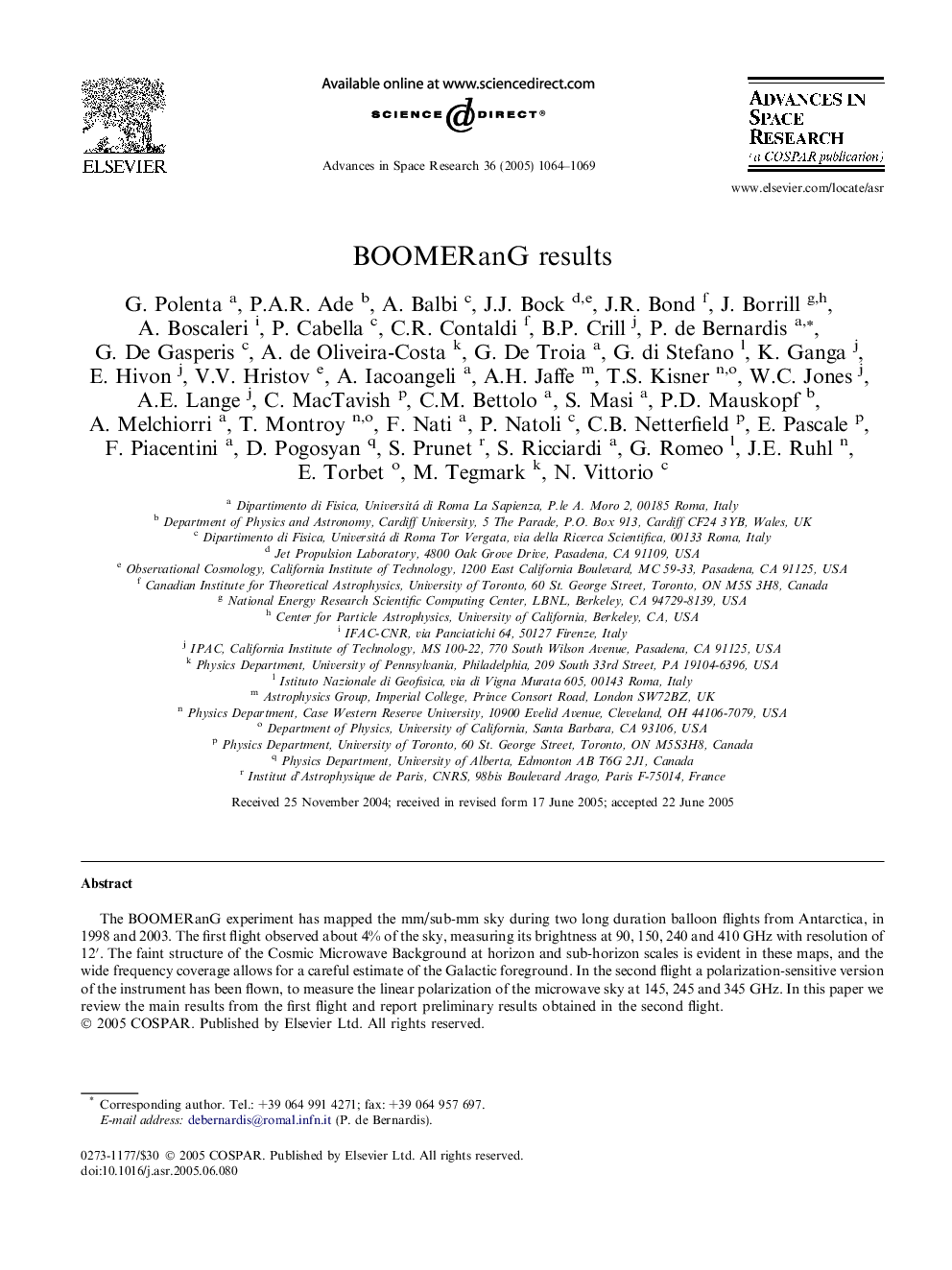| Article ID | Journal | Published Year | Pages | File Type |
|---|---|---|---|---|
| 10696344 | Advances in Space Research | 2005 | 6 Pages |
Abstract
The BOOMERanG experiment has mapped the mm/sub-mm sky during two long duration balloon flights from Antarctica, in 1998 and 2003. The first flight observed about 4% of the sky, measuring its brightness at 90, 150, 240 and 410Â GHz with resolution of 12â². The faint structure of the Cosmic Microwave Background at horizon and sub-horizon scales is evident in these maps, and the wide frequency coverage allows for a careful estimate of the Galactic foreground. In the second flight a polarization-sensitive version of the instrument has been flown, to measure the linear polarization of the microwave sky at 145, 245 and 345Â GHz. In this paper we review the main results from the first flight and report preliminary results obtained in the second flight.
Related Topics
Physical Sciences and Engineering
Earth and Planetary Sciences
Space and Planetary Science
Authors
G. Polenta, P.A.R. Ade, A. Balbi, J.J. Bock, J.R. Bond, J. Borrill, A. Boscaleri, P. Cabella, C.R. Contaldi, B.P. Crill, P. de Bernardis, G. De Gasperis, A. de Oliveira-Costa, G. De Troia, G. di Stefano, K. Ganga, E. Hivon, V.V. Hristov, N. Vittorio,
